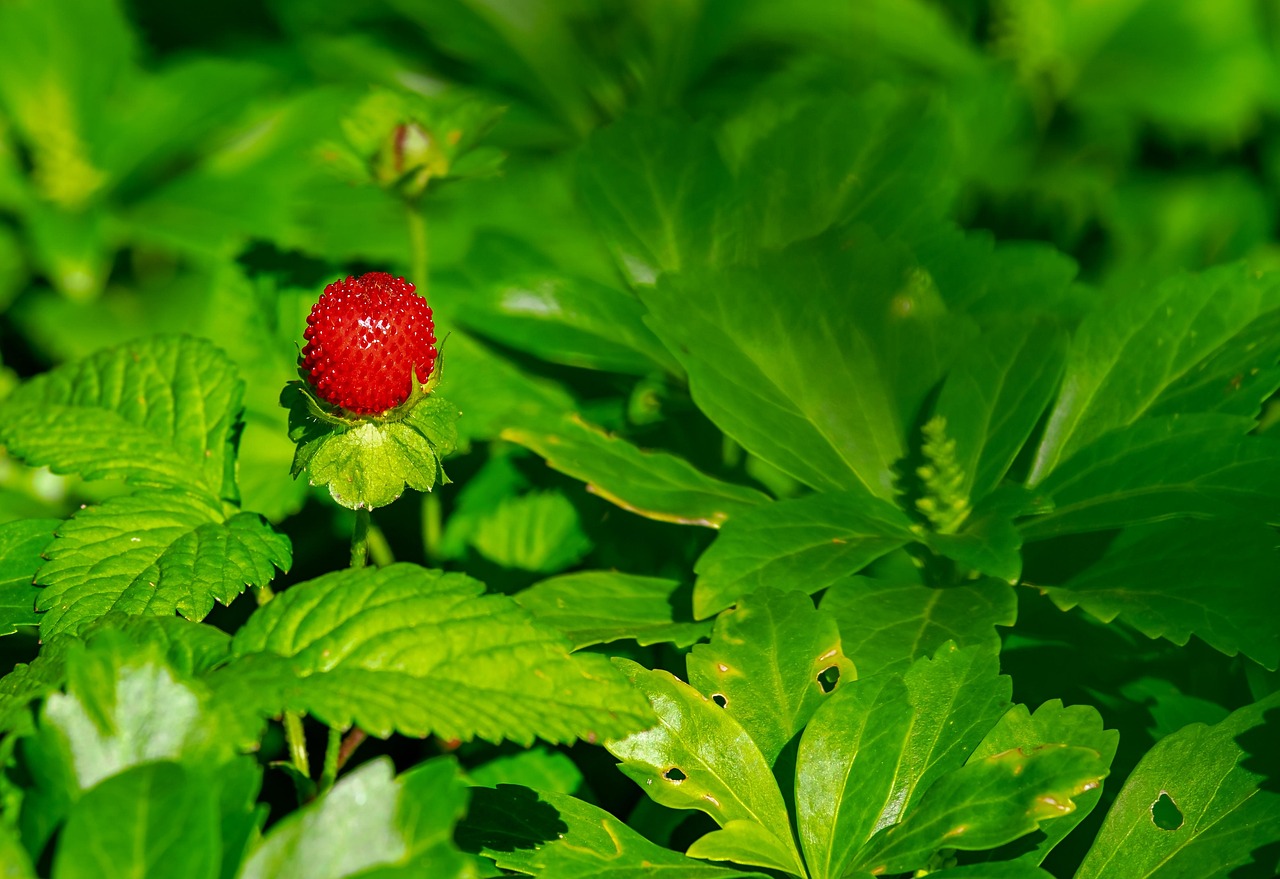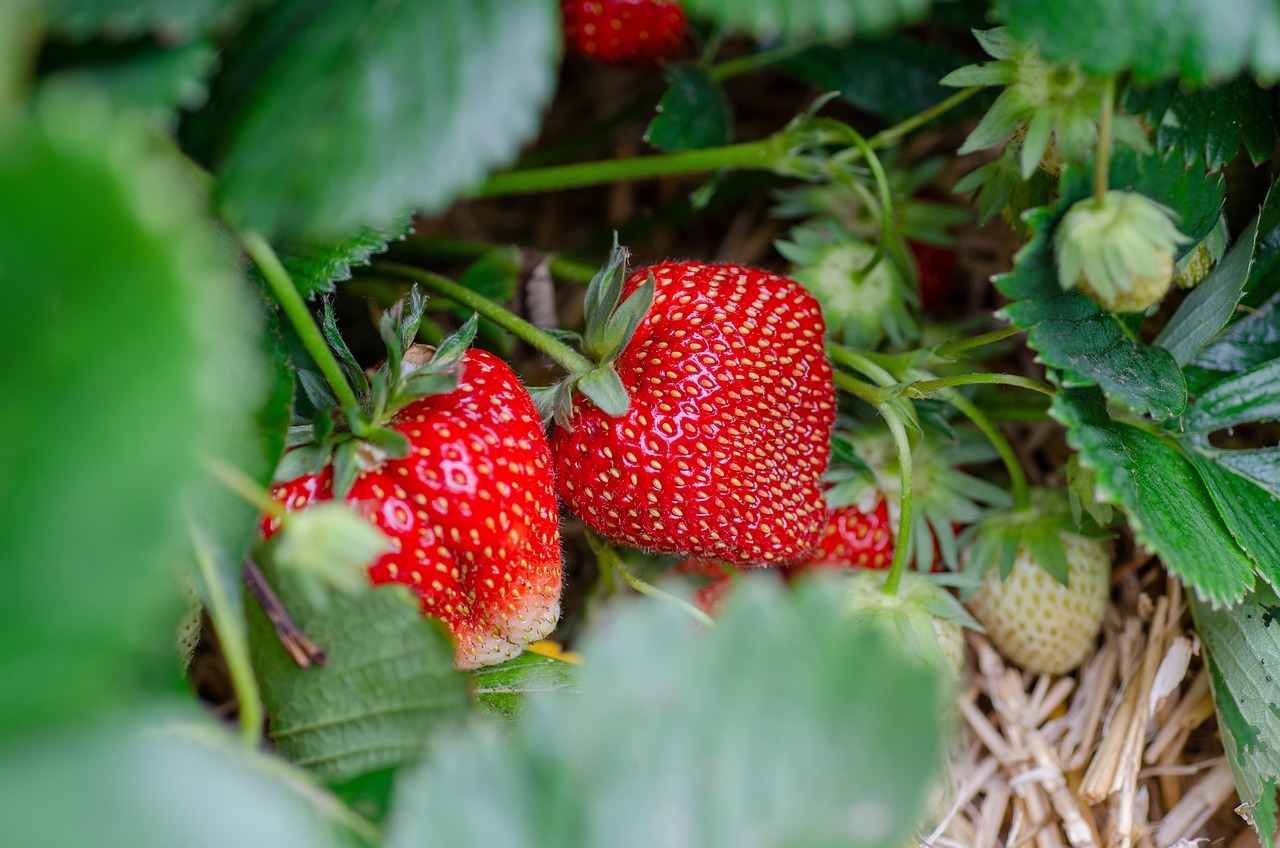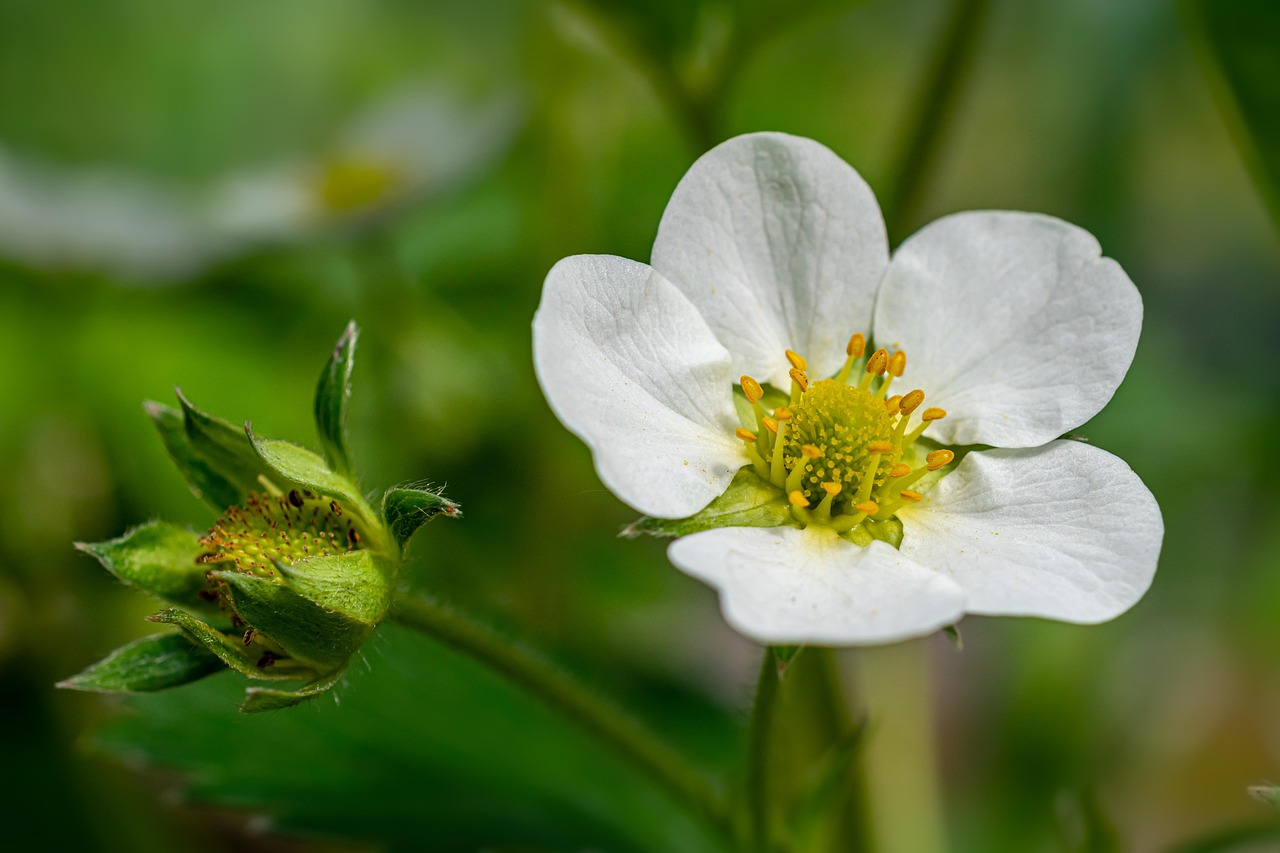Strawberry plant leaves curling down can be caused by several factors including environmental stress, pest infestations, nutrient deficiencies, or disease. Identifying the exact cause is essential for effective treatment and ensuring healthy plant growth.
Strawberries are a beloved fruit, cherished for their sweet flavor and vibrant color. However, like all plants, they can be susceptible to various issues that affect their growth and health. One common problem gardeners encounter is the curling of strawberry leaves. This phenomenon can manifest in many ways and is often a symptom of underlying issues that need addressing to maintain a thriving strawberry crop.
Understanding the causes of leaf curling in strawberry plants is crucial for any gardener. Both novice and experienced growers should be aware of the factors that can lead to this issue. By recognizing the symptoms early on, you can take proactive measures to remedy the situation. The following sections will delve deeper into potential causes and solutions.
Environmental Stress

One of the primary reasons for curling leaves in strawberry plants is environmental stress. Various environmental factors can contribute to this issue, including temperature fluctuations, inadequate watering, and poor soil conditions.
- Temperature: Strawberries thrive in moderate temperatures. Extreme heat or cold can cause stress, leading to leaf curling.
- Watering: Both overwatering and underwatering can result in leaf curl. It is essential to maintain consistent soil moisture levels.
- Soil Quality: Poor soil conditions, such as high salinity or compaction, can hinder root development and nutrient uptake.
Pest Infestations
Pests can also play a significant role in the curling of strawberry leaves. Various insects are known to attack strawberry plants, leading to damage that manifests as curled leaves.
- Aphids: These small insects feed on plant sap, causing leaves to curl and distort.
- Spider Mites: Often found in dry conditions, spider mites can cause yellowing and curling of leaves.
- Slugs and Snails: These pests can also damage leaves, although their primary impact is through feeding on the foliage rather than directly causing curl.
Nutrient Deficiencies
Nutrient deficiencies can lead to several issues in strawberry plants, including leaf curling. Essential nutrients such as nitrogen, potassium, and magnesium play critical roles in plant health.
| Nutrient | Symptoms of Deficiency |
|---|---|
| Nitrogen | Stunted growth and yellowing leaves |
| Potassium | Leaf curling and browning at the edges |
| Magnesium | Interveinal chlorosis and leaf curling |
Addressing these nutrient deficiencies often involves soil testing and appropriate fertilization strategies. By ensuring that your strawberry plants receive adequate nutrition, you can promote healthier growth and reduce the occurrence of leaf curling.
Diseases
In addition to environmental stress and pests, diseases can also contribute to the curling of strawberry leaves. Fungal infections or bacterial diseases may lead to symptoms that resemble those caused by other factors.
- Powdery Mildew: This fungal disease results in a white powdery coating on leaves and can cause them to curl.
- Bacterial Leaf Spot: This disease leads to dark spots on the leaves and may result in curling as the plant attempts to heal.
Understanding these potential causes will help you identify the issues affecting your strawberry plants. Promptly addressing these problems can restore their health and productivity.
Prevention Strategies for Curling Strawberry Leaves
Preventing the curling of strawberry leaves involves proactive approaches to care, pest management, and environmental control. By implementing these strategies, you can create an optimal growing environment for your strawberry plants and reduce the likelihood of leaf curling.
Optimal Growing Conditions
Creating the right conditions for strawberry plants is essential. This includes selecting the appropriate planting site, maintaining soil health, and ensuring proper watering practices.
- Site Selection: Choose a location that receives full sunlight for at least six hours a day. Adequate sunlight promotes healthy growth and reduces susceptibility to diseases.
- Soil Preparation: Before planting, enrich the soil with organic matter such as compost. Well-draining soil with good fertility supports strong root systems.
- Water Management: Water deeply but infrequently. This encourages deep root growth and helps prevent overwatering, which can lead to leaf curl.
Pest Management
Effective pest management is crucial to protect your strawberry plants from infestations that can cause leaf curling. Implementing integrated pest management (IPM) practices can help in controlling pest populations.
- Regular Monitoring: Inspect your plants regularly for signs of pests. Early detection allows for timely intervention.
- Natural Predators: Encourage beneficial insects like ladybugs and lacewings that feed on aphids and other harmful pests.
- Insecticidal Soaps: Use insecticidal soaps or neem oil as organic treatment options to manage pest populations without harming beneficial insects.
Nutrient Management
Maintaining balanced nutrient levels is vital for the health of your strawberry plants. Regular soil testing can provide insights into nutrient availability and help you formulate a fertilization plan.
Fertilization Techniques
Applying fertilizers appropriately can prevent nutrient deficiencies that lead to curling leaves. Here are some effective techniques:
- Soil Tests: Conduct soil tests annually to determine nutrient levels and pH balance. This helps tailor your fertilization strategy.
- Organic Fertilizers: Use organic fertilizers like compost or well-rotted manure to improve soil health and provide essential nutrients.
- Balanced Fertilizers: Choose N-P-K fertilizers that contain nitrogen, phosphorus, and potassium in balanced ratios. Follow recommended application rates to avoid over-fertilization.
Disease Management Practices

Preventing diseases is an essential aspect of maintaining healthy strawberry plants. Implementing good cultural practices can significantly reduce the incidence of diseases that cause leaf curling.
Cultural Practices
Cultural practices refer to the methods used in growing plants that can enhance their overall health and resilience against diseases.
- Crop Rotation: Rotate your strawberry crops every three years to prevent the buildup of soil-borne diseases.
- Proper Spacing: Ensure adequate spacing between plants to promote air circulation. This helps reduce humidity, which can encourage fungal diseases.
- Sanitation: Remove any plant debris or fallen leaves from around the plants. This minimizes the risk of disease spread from infected material.
Pest and Disease Resistance Varieties
Selecting resistant varieties of strawberries can significantly reduce the chances of encountering issues such as leaf curling. Many strawberry cultivars have been developed specifically for their resistance to pests and diseases.

When choosing strawberry plants, look for varieties known for their resilience against common pests and diseases. Some popular options include:
- Chandler: Known for its large fruit size and good taste, this variety is moderately resistant to some diseases.
- Earliglow: A popular choice for its early fruiting and resistance to certain fungal diseases.
- Sugar Baby: This compact variety is ideal for small spaces and shows good resistance to pests.
By focusing on prevention through proper care and management strategies, you can promote healthier strawberry plants and reduce the incidence of leaf curling. These proactive measures will create a thriving environment for your strawberries, ensuring they yield delicious fruit.
Identifying Symptoms of Leaf Curling in Strawberry Plants
Recognizing the specific symptoms associated with curling leaves is crucial for diagnosing and addressing the underlying issues affecting strawberry plants. Early identification can lead to effective management strategies that protect the plant’s health and productivity.
Visual Symptoms to Observe
When inspecting your strawberry plants, look for a variety of visual indicators that may signify leaf curling. These symptoms often provide clues about the cause of the issue.
- Curling Direction: Observe whether leaves are curling upwards or downwards. Downward curling often indicates environmental stress, while upward curling might suggest pest activity.
- Color Changes: Yellowing leaves may indicate nutrient deficiencies, while browning edges can signify improper watering or pest damage.
- Texture Alterations: Rough or distorted leaf surfaces can indicate pest infestations such as aphids or spider mites.
- Spots and Marks: Presence of dark spots or powdery mildew suggests potential fungal infections or bacterial diseases.
Leaf Curling Patterns
The pattern of leaf curling can provide insight into the specific cause. Different issues may manifest in distinct ways:
- Uniform Curling: If most leaves exhibit the same curling pattern, it is likely due to environmental factors such as temperature stress or watering issues.
- Localized Curling: If only a few leaves are affected, this may indicate a localized pest problem or infection.
- Progressive Curling: Observe if the curling spreads from older to younger leaves. This progression can suggest a systemic issue such as disease or nutrient deficiency.
Common Pests Affecting Strawberry Plants

Pest infestations are one of the most frequent causes of leaf curling in strawberry plants. Understanding the common pests that target strawberries can help you implement effective control measures.
Aphids
Aphids are small, soft-bodied insects that feed on the sap of young leaves and stems. They can cause significant damage by weakening the plant and transmitting diseases.
- Identification: Look for clusters of small, green, or black insects, often located on the undersides of leaves.
- Management: Use insecticidal soap or neem oil to control infestations. Introducing natural predators like ladybugs can also be effective.
Spider Mites
Spider mites thrive in dry conditions and can quickly multiply, leading to severe damage to strawberry plants.
- Identification: Look for fine webbing on the undersides of leaves and small yellow or white spots on leaf surfaces.
- Management: Increase humidity around plants, and use miticides or insecticidal soaps to manage populations.
Slugs and Snails
Slugs and snails are common garden pests that feed on strawberry foliage, often causing extensive damage.
- Identification: Check for slimy trails and irregular holes in leaves. They are more active at night and in damp conditions.
- Management: Hand-picking, setting traps, and using barriers such as copper tape can help control their populations.
Diseases that Cause Leaf Curling
Diseases pose a significant threat to strawberry plants and can lead to leaf curling. Identifying these diseases early is vital for effective management.
Powdery Mildew
This fungal disease is characterized by a white powdery growth on leaves and stems. It thrives in warm, dry conditions and can lead to curling leaves.
- Treatment: Improve air circulation around plants, apply fungicides, and remove infected plant material to prevent spread.
Bacterial Leaf Spot
Bacterial leaf spot is caused by bacteria that create dark, water-soaked lesions on leaves. As the disease progresses, affected leaves may curl and die.
- Treatment: Remove infected leaves promptly and apply copper-based bactericides as a preventive measure.
By closely monitoring your strawberry plants for these symptoms and understanding the common pests and diseases that could affect them, you can take timely action to rectify issues leading to leaf curling. Proactive management will foster healthier plants and better yields over time.
Additional Considerations for Strawberry Plant Care
In addition to the factors previously discussed, there are several other important considerations to keep in mind when caring for strawberry plants. Paying attention to these details can further enhance plant health and fruit production.
Mulching Techniques
Applying mulch around strawberry plants offers numerous benefits that can help prevent leaf curling and promote overall plant health.
- Moisture Retention: Mulch helps retain soil moisture, reducing the frequency of watering and preventing stress-related curling.
- Temperature Regulation: A layer of mulch can moderate soil temperatures, protecting roots from extreme heat or cold.
- Weed Control: Mulching suppresses weed growth, reducing competition for nutrients and water, which can contribute to healthier plants.
Proper Pruning Practices
Regular pruning is essential for maintaining the health and productivity of strawberry plants. Removing dead or diseased leaves can help prevent the spread of pests and diseases.
- Tidy Up: Regularly remove any yellowing or diseased leaves to improve air circulation and reduce disease risk.
- Runner Management: If growing June-bearing strawberries, consider managing runners to promote better fruit production in the main plants.
Seasonal Care Adjustments
Adjusting care practices with the changing seasons is vital for optimal growth. Different seasons bring unique challenges and requirements for strawberry plants.
- Spring Care: As temperatures warm, ensure adequate watering and monitor for pests that emerge in spring.
- Summer Maintenance: Apply shade cloth during extreme heat to protect plants from stress and monitor soil moisture closely.
- Fall Preparation: Prepare plants for winter by mulching to protect roots from frost and ensuring thorough watering before dormancy.
Final Thoughts
Caring for strawberry plants requires a comprehensive understanding of various factors that contribute to leaf curling and overall plant health. By recognizing the symptoms of curling leaves, implementing effective management strategies, and maintaining optimal growing conditions, you can significantly improve the vitality of your strawberry plants.
Remember that prevention is key. Regular monitoring for pests and diseases, along with proper nutrition and watering practices, will create a robust environment for your strawberries. Additionally, using resistant varieties and adapting care techniques seasonally will further safeguard against issues that lead to leaf curling.
With diligent care and attention, you can cultivate healthy strawberry plants that yield delicious fruit year after year. The joy of harvesting ripe strawberries from your garden makes the effort worthwhile, providing not only fresh produce but also a sense of accomplishment in your gardening journey.
By following the guidelines outlined in this article, you will be well-equipped to tackle the challenges of growing strawberries and enjoy a fruitful harvest. Happy gardening!
